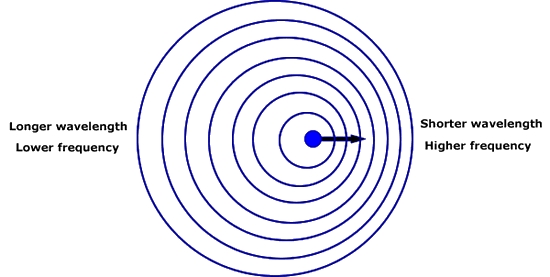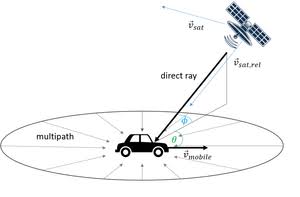Doppler Effect is also known as Doppler shift and it is the change in frequency or we can say wavelength of a wave in relation to an observer who is moving to the wave source. This phenomenon is described by an Australian physicist Christian Doppler in 1842. For an example of this Doppler shift can be observed in the change of the pitch heard while a vehicle sounding a horn approaches and recedes from an observer. The response behind the Doppler effect is that when the sound force of the waves is moving towards the observer each and every successive wave crest is emitted from a position closer to the observer that the crest of the previous wave. For such waves that propagate in a medium such as sound waves the velocity of the observer and of the source which is relative to is medium in which the waves are transmitted.

In which field this application is used?
This Doppler erect is used in robotics, astronomy, sirens, radars, medical, flow measurement, satellite communication, and audio many more applications. In robotics dynamic real-time path planning to aid the movements of robots in a sophisticated environment with moving obstacles that take this Doppler effect. In sirens when on passing the emergency vehicle will start out with higher than it’s normal pitch and slides down as it passes or continues lower than it’s stationary pitch as it recedes from the observer this process takes minutes to be happened. In astronomy this Doppler effect for the electromagnetic waves in case of light is of great use in astronomy which results in a redshift or blue shift. In radar,the Doppler effect is used to measure the velocity of detected objects. There are some situations in which the radar beam is fired at moving car as it approaches the successive wave travels a lesser distance decreasing the wavelength and this can be changed or varied from one another.

What is the inverse Doppler Effect?
In 1968 scientist name Victor Veselago speculated about the possibility of this inverse Doppler effect in this the size of the Doppler shift depends on the refractive index of the medium where a wave is traveling. But in some situations, some materials are capable of negative refraction which leads to Doppler Effect which works in a different direction which is opposite to the conventional Doppler. The very first experiment that detected this Doppler Effect or shift was conducted by Nigel Seddon and Trevor from United Kingdom in 2003 but after that, this effect was observed in some inhomogeneous materials.